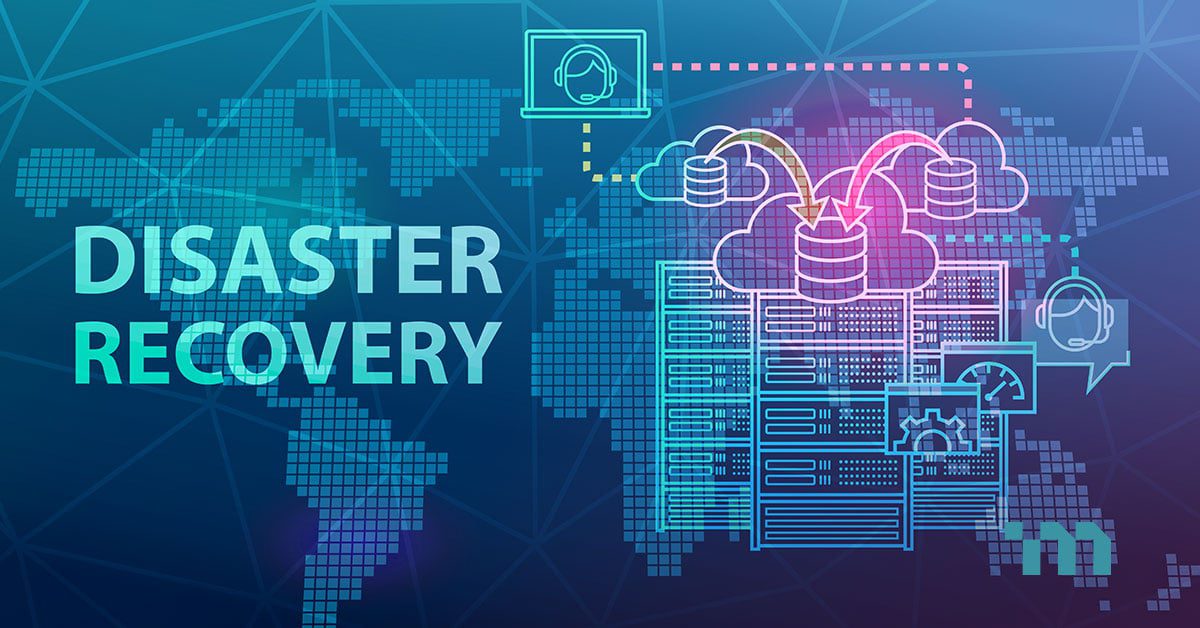When everything runs smoothly, it’s easy to forget how quickly things can go wrong, whether it’s a server crash, a cyberattack, or a flood that knocks out your systems. For businesses that rely on technology to serve customers, even a short outage can lead to missed sales, frustrated clients, and long-term damage. That’s why having a plan to bounce back quickly isn’t just smart, it’s essential.
Cloud disaster recovery helps you stay up and running, even when the unexpected hits. It’s like having a safety net that catches your business before it falls too far. You don’t need to be a tech expert to understand it; you just need to know that your data, systems, and services can be restored fast, without panic or guesswork. By connecting with the Cloud Computing Provider in Houston, you’ll have a trusted team ready to protect your business, restore your systems quickly, and keep downtime from disrupting your success, even when the unexpected strikes!
In this blog, we will explore cloud disaster recovery planning, why it matters, how to choose the right model, and how to design a plan that protects your business when every second counts.
Understanding Cloud Disaster Recovery
Cloud disaster recovery is a way to keep your business running when something goes wrong, like a system failure, cyberattack, or natural disaster. Instead of relying on physical backups or manual fixes, cloud recovery uses online tools to restore your data and services quickly. It’s faster, more flexible, and often more affordable than traditional methods.
Here’s what makes cloud disaster recovery easy to understand:
- It stores your data safely online, so you don’t lose important files or customer information.
- It helps you get back to work quickly, even if your central systems go down.
- It can be set up to work automatically, so you don’t have to scramble during a crisis.
Whether you run a small business or a large company, cloud disaster recovery gives you peace of mind knowing that your operations won’t stop when trouble strikes.
Key Components of a Cloud DR Plan
A strong cloud disaster recovery (DR) plan helps your business stay prepared and bounce back quickly when something goes wrong. It’s not just about saving files, it’s about keeping your entire system working with minimal delay. To build a reliable plan, you need to focus on a few key areas that make recovery smooth and stress-free.
Here are the main components of a cloud DR plan:
- Backup Strategy: Regularly save copies of your data to the cloud so you can restore it if needed. Choose how often backups happen, daily, hourly, or instantly, based on how important the data is.
- Recovery Goals: Set clear targets for how fast you want systems back online (Recovery Time Objective) and how much data you can afford to lose (Recovery Point Objective).
- Failover Setup: Create a backup system that can take over if your primary system fails. This keeps your services running without long delays.
- Testing and Updates: Run practice drills and keep your plan current so it works when you need it most.
These steps help ensure your business stays protected and ready.
How to Choose the Right Cloud DR Model
Choosing the right cloud disaster recovery (DR) model depends on your business size, budget, and how quickly you need to recover during a crisis. Not every company needs the same setup, so it’s essential to pick a model that fits your needs without adding unnecessary costs or complexity.
Here are three common cloud DR models and how they work:
- Public Cloud DR: This uses services like AWS, Azure, or Google Cloud to store backups and run recovery systems. It’s flexible, cost-effective, and great for businesses already using cloud platforms. You only pay for what you use, and you can scale up or down easily.
- Hybrid Cloud DR: This combines your existing on-premises systems with cloud-based backups. It gives you more control over sensitive data while still offering cloud flexibility. It’s ideal for companies with older systems or strict data rules.
- Disaster Recovery as a Service (DRaaS): A third-party provider handles everything, from setup to recovery. It’s a hands-off option that’s perfect for small businesses or teams without in-house IT support.
To choose the right model, consider your recovery speed, data volume, and whether you prefer self-management or expert care.
How to Design a Cloud Disaster Recovery Plan
A well-structured cloud disaster recovery (DR) plan helps your business bounce back quickly from unexpected disruptions. Whether it’s a cyberattack, hardware failure, or natural disaster, having a clear recovery roadmap ensures minimal downtime and data loss.
If you’re searching for a reliable provider to build your disaster recovery plan, get in touch with Disaster Recovery Services experts in Houston to ensure your business stays resilient and downtime-free!
Here’s how to build a plan that’s practical, effective, and easy to manage.
1.Identify Critical Systems and Data
Begin by pinpointing the systems and data your business relies on most. These could include customer databases, financial records, email servers, and operational tools. Ask: “What would stop us from functioning if it went offline?” Prioritize assets based on business impact.
Key tip:
- Include dependencies like third-party apps or integrations that support core operations.
This step ensures your recovery efforts focus on what truly matters, avoiding wasted resources on non-essential components.
2.Set Recovery Goals (RTO & RPO)
Define your Recovery Time Objective (RTO), which is how quickly systems must be restored, and Recovery Point Objective (RPO), which is how much data loss is acceptable. These metrics guide your backup frequency and infrastructure choices.
For example:
- A 1-hour RTO signifies that systems need to be restored within one hour.
- A 15-minute RPO means backups should occur at least every 15 minutes.
Tailor these goals to your business needs, balancing cost with operational urgency.
3.Choose the Right Cloud DR Model
Select a cloud DR model that aligns with your resources and recovery goals. Common options include:
- Public cloud: Cost-effective and scalable.
- Hybrid cloud: Combines on-prem and cloud for flexibility.
- DRaaS (Disaster Recovery as a Service): Outsourced recovery management.
Consider your IT team’s capabilities, budget, and compliance needs. The right model simplifies recovery and ensures faster response during outages.
4.Create a Backup and Replication Strategy
Design a strategy that protects your data without overcomplicating operations. Use automated backups and real-time replication to keep data safe and accessible.
Best practices include:
- Storing backups in multiple geographic regions.
- Encrypting data during transfer and storage.
- Scheduling backups based on RPO targets.
This ensures your data is recoverable even if one location is compromised.
5.Plan for Failover and Failback
Failover is the switch to backup systems during a disruption; failback is the return to normal operations. Your plan should clearly outline both processes.
Include:
- Conditions that trigger failover.
- Roles and responsibilities during transition.
- Steps for restoring original systems post-recovery.
A smooth failover/failback process minimizes confusion and keeps operations running with minimal interruption.
6.Automate Where Possible
Automation reduces human error and speeds up recovery. Use tools that:
- Monitor system health.
- Trigger backups and failovers.
- Send alerts during incidents.
Automating repetitive tasks frees up your team to focus on strategic decisions during a crisis. It also ensures consistency and reliability across your DR processes.
7.Test Regularly
A DR plan is only effective if it’s tested. Schedule routine drills to simulate different failure scenarios.
Focus on:
- System response times.
- Team coordination.
- Identifying gaps or bottlenecks.
Update your plan based on test results and evolving business needs. Regular testing builds confidence and ensures your recovery strategy works when it’s needed most.
Final Words
Planning for cloud disaster recovery isn’t just about technology, but keeping your business running when the unexpected happens. By identifying what’s critical, setting clear recovery goals, choosing the right cloud model, and building a reliable backup and failover strategy, you can minimize downtime and protect your data. Automating key steps and testing regularly ensures your plan works when it matters most. With a thoughtful, well-tested approach, you’ll be ready to respond quickly and confidently to any disruption.
Read also Louise Dublin





























